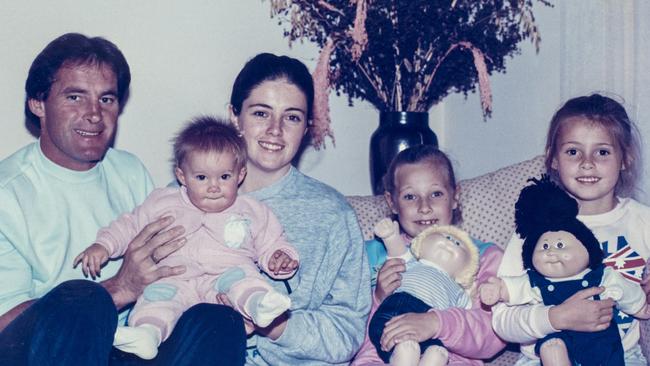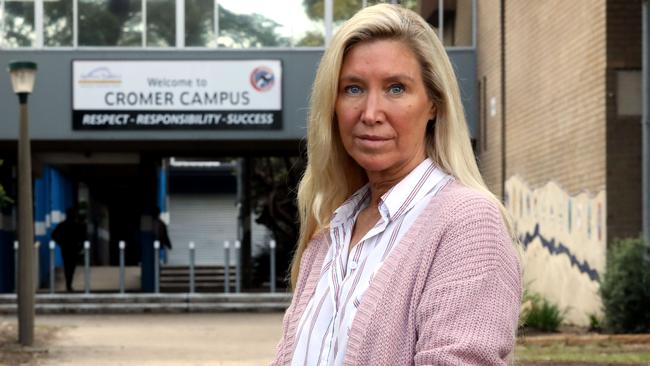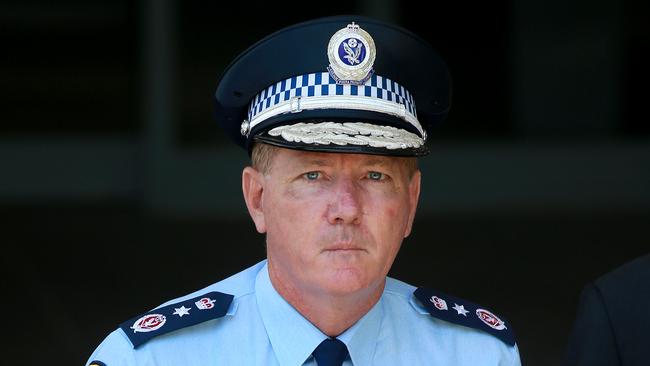Teacher’s Pet podcast: NSW Police ‘dropped the ball’ on Lyn Dawson’s case
Friend reveals Joanne Curtis left Chris Dawson after fearing she had become ‘disposable’ and that her life was at risk.

NSW Police Commissioner Mick Fuller has revealed detectives recently dug and used ground-penetrating radar looking for Lyn Dawson’s remains at her former home, as he admitted police “dropped the ball” after the mother vanished in the 1980s.
Homicide detectives also brought in a burial site expert to “map the entire block” at Gilwinga Drive in Bayview, on Sydney’s northern beaches, where Lyn had lived, as part of a re-investigation that began in 2015.
“I would say we dropped the ball in the ’80s, like many other people did with this case,” Mr Fuller said yesterday, in his first public comments on the case since The Australian launched The Teacher’s Pet podcast series in May, uncovering documents lost for years and finding new witnesses.
His comments, on journalist Miranda Devine’s Daily Tele Live program, come as more details emerge about the relationship between Lyn’s husband and suspected killer, Chris Dawson, and his former teenage lover Joanne Curtis.
On a new episode of The Teacher’s Pet, released tomorrow, a witness, friend Michelle Walsh, says Ms Curtis left Mr Dawson after fearing she had become “disposable” and that her life was at risk. After marrying Mr Dawson following his wife’s disappearance and moving with him from Sydney’s northern beaches to Queensland, Ms Curtis saw herself becoming just like his missing wife, Lyn.

“I remember her saying she would come home and there were girls in the pool,” Ms Walsh says. “Like, the whole cycle started again, only she was in Lyn’s shoes. All of a sudden she became disposable and basically she became Lyn, and thought she would get out before he killed her.”
Ms Curtis took her daughter, Kristin, and left Mr Dawson and his two young girls, Shanelle and Sherryn, and moved back to NSW. Soon after her return she had dinner with school friends at a home in Collaroy on Sydney’s northern beaches in 1990.
“She was determined she was going to get the police involved and open it up so she felt safe,” said Ms Walsh, who was several years below Ms Curtis at school.
“I do remember her specifically saying she was scared of him — like really scared of him — and that she was going to do it so that she felt safe, so that everybody will then know and ‘he won’t be able to touch me’.
“She was letting go. And she was telling it all. It was all coming out — about the other schoolgirls in the pool, and everything that was going on, and how he abused her and she just thought she had to get out before he murdered her. She just sort of planned this escape. And she was terrified.”
Ms Curtis was 16 and in year 11 at Cromer High, on the northern beaches, when she started a sexual relationship with Mr Dawson, her sports teacher, in 1980. Their affair was continuing when Lyn vanished in January 1982. Two days after Lyn disappeared, Ms Curtis moved into the Dawson home at Bayview. Two separate coroners found Lyn was murdered by her husband, a former Newtown Jets rugby league star, but he was not charged. Mr Dawson denies killing his wife.

Police this year again asked the NSW Director of Public Prosecutions whether there was enough evidence to lay charges after new investigations by the Unsolved Homicide Unit.
The podcast series has highlighted police incompetence or pointed to a possible cover-up during the 1980s when the Dawson twins had strong ties to police through rugby league. Police on the northern beaches and up to senior ranks turned a blind eye despite written allegations that Mr Dawson should be investigated for foul play.
Mr Fuller said police had been reluctant to talk about recent investigations because of concerns it could affect any future prosecution.
“The work that has been happening in the last couple of years has been extraordinary,” Mr Fuller said. “We used ground-penetrating radar in 1990, 91, 99, and 2016. We dug in 2000 and 2016. We had a burial site expert come and map the entire block in 2015. We’ve had cadaver dogs there as well.”
He understood community “frustration” and said: “If these podcasts are going to be a popular forum, NSW Police needs to find a position where we’re not compromising the brief of evidence. But at the same time it seems to have generated so much information and new evidence that we still need to be part of it somehow.”
Do you know more about this story? Contact thomash@theaustralian.com.au


